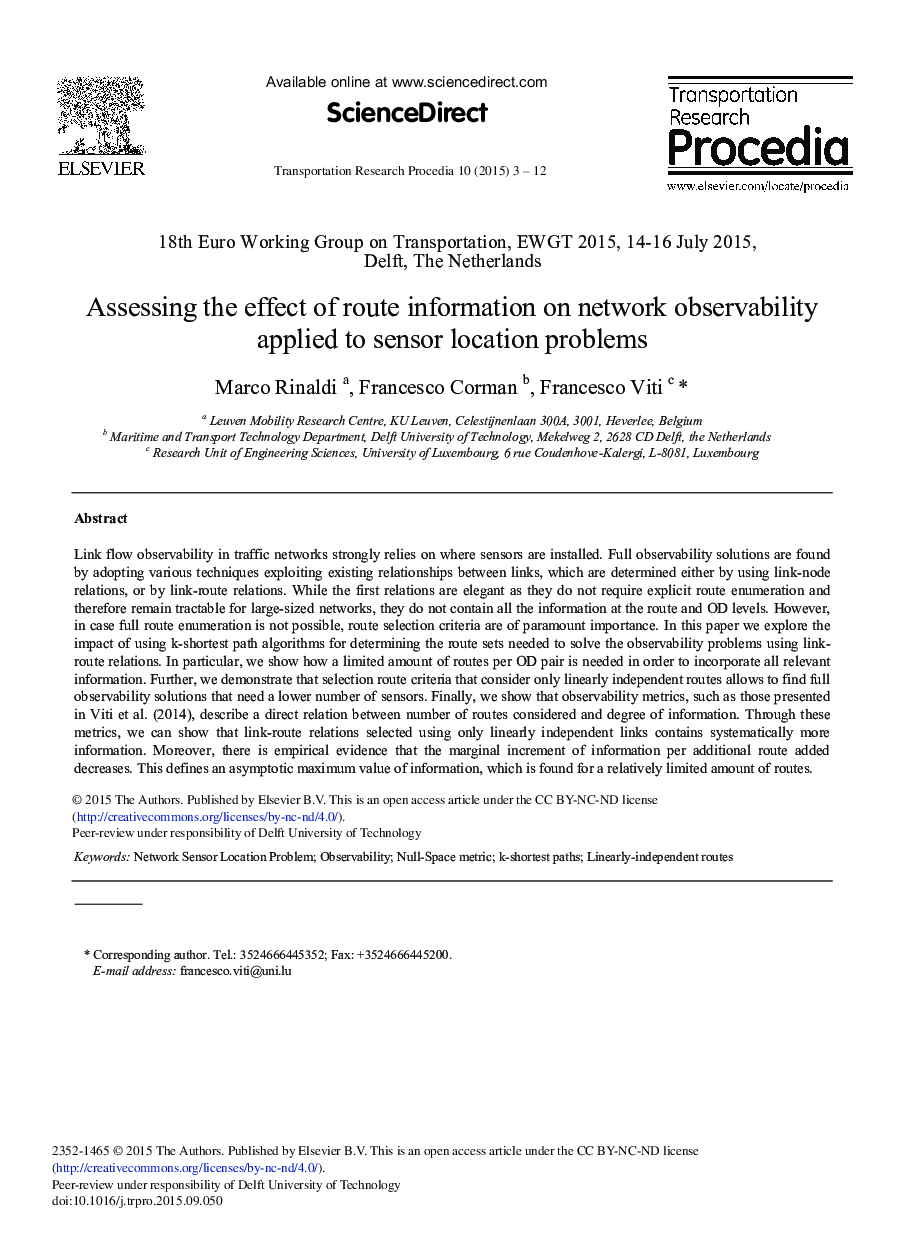| Article ID | Journal | Published Year | Pages | File Type |
|---|---|---|---|---|
| 1106809 | Transportation Research Procedia | 2015 | 10 Pages |
Link flow observability in traffic networks strongly relies on where sensors are installed. Full observability solutions are found by adopting various techniques exploiting existing relationships between links, which are determined either by using link-node relations, or by link-route relations. While the first relations are elegant as they do not require explicit route enumeration and therefore remain tractable for large-sized networks, they do not contain all the information at the route and OD levels. However, in case full route enumeration is not possible, route selection criteria are of paramount importance. In this paper we explore the impact of using k-shortest path algorithms for determining the route sets needed to solve the observability problems using link-route relations. In particular, we show how a limited amount of routes per OD pair is needed in order to incorporate all relevant information. Further, we demonstrate that selection route criteria that consider only linearly independent routes allows to find full observability solutions that need a lower number of sensors. Finally, we show that observability metrics, such as those presented in Viti et al. (2014), describe a direct relation between number of routes considered and degree of information. Through these metrics, we can show that link-route relations selected using only linearly independent links contains systematically more information. Moreover, there is empirical evidence that the marginal increment of information per additional route added decreases. This defines an asymptotic maximum value of information, which is found for a relatively limited amount of routes.
